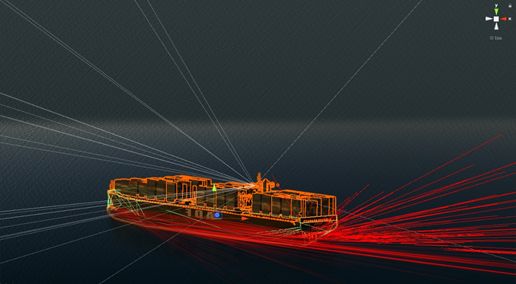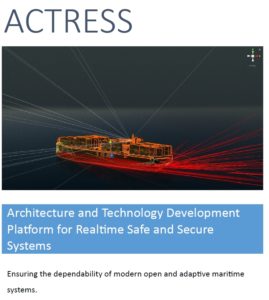MOTIVATION
In the classical engineering approach, a system has a dedicated system boundary and consists of interconnected elements that interact with each other as well as with elements beyond the system boundary. The elements themselves are regarded as black boxes. The emergent behavior of the system is defined by the behavior of its elements and their organization.
In the world of eNavigation, however, the system boundaries become permeable and time-variable, depending on the actively involved actors and processes. In such a dynamic System of Systems (SoS), there is no central control center that performs SoS-wide monitoring and control. The functional limits of the operating software are no longer identical with the hardware limits of computers and boxes. The engineers therefore no longer have control over all functional elements in such a SoS. Failures and defects that occur in a local subsystem can cause enormous consequential damage in any other corner of the SoS.
Global maritime connectivity requires a thorough review of all current maritime practices: legal and commercial regulations, responsibilities, liability and insurance; and above all, it requires a complete rethink of the technical processes involved in designing, integrating and testing maritime systems.
OBJECTIVES AND APPROACHES
The Architecture and Technology Development Platform for Real-Time Safe and Secure Systems (ACTRESS) is the starting point for this rethinking of the engineering process. Partners from science, industry, classification societies, and state authorities have joined forces to look at these engineering challenges from all relevant perspectives. Within ACTRESS they will develop and provide new methods for verification and validation of complex highly-automated Sos. These methods will include new architectures for safe and secure maritime SoS, approaches for simulation and physically based testing of highly-automated maritime SoS, and finally approaches for safety and security validation of connected maritime SoS.
 In addition, ACTRESS will provide a technology development platform that can be used by stakeholders for their own development, verification and validation of new maritime SoS-technologies. This platform will provide both a simulation-based environment for full virtual design, verification and validation (V&V-Lab), and a physical mobile platform with sensors, network and bridge systems to be deployed on research vessels and boats for verification and validation of new technologies in their planned operational environment.
In addition, ACTRESS will provide a technology development platform that can be used by stakeholders for their own development, verification and validation of new maritime SoS-technologies. This platform will provide both a simulation-based environment for full virtual design, verification and validation (V&V-Lab), and a physical mobile platform with sensors, network and bridge systems to be deployed on research vessels and boats for verification and validation of new technologies in their planned operational environment.
Furthermore, an on-site platform with sensor stations on the coast will be available to cover shore-based aspects for maritime SoS. ACTRESS will provide the basis for future maritime SoS-engineering and training of future engineers. This will support the transfer of these new principles into future certification and classification processes as well as into new standards and regulations for future maritime SoS.
Project duration: 01.09.2017 - 31.08.2020
Financially supported by German Federal Ministry for Economoc Affairs and Energy (BMWi)
PROJECT PARTNERS
OFFIS
www.offis.de
Atlas Elektronik
www.atlas-elektronik.com
Frauenhofer FKIE
www.fkie.fraunhofer.de
Bundesministerium für Wirtschaft und Energie
www.bmwi.de
Raytheon Anschütz
www.raytheon-anschuetz.com
Bundesamt für Seeschifffahrt und Hydrographie
www.bsh.de
DNV GL
www.dnv.com
AVL
www.avl.com
